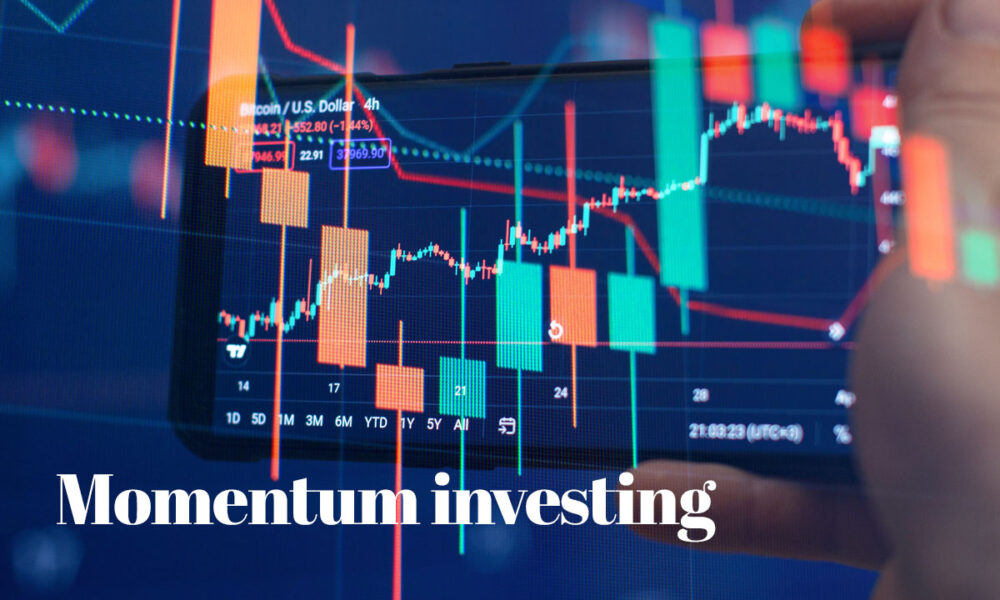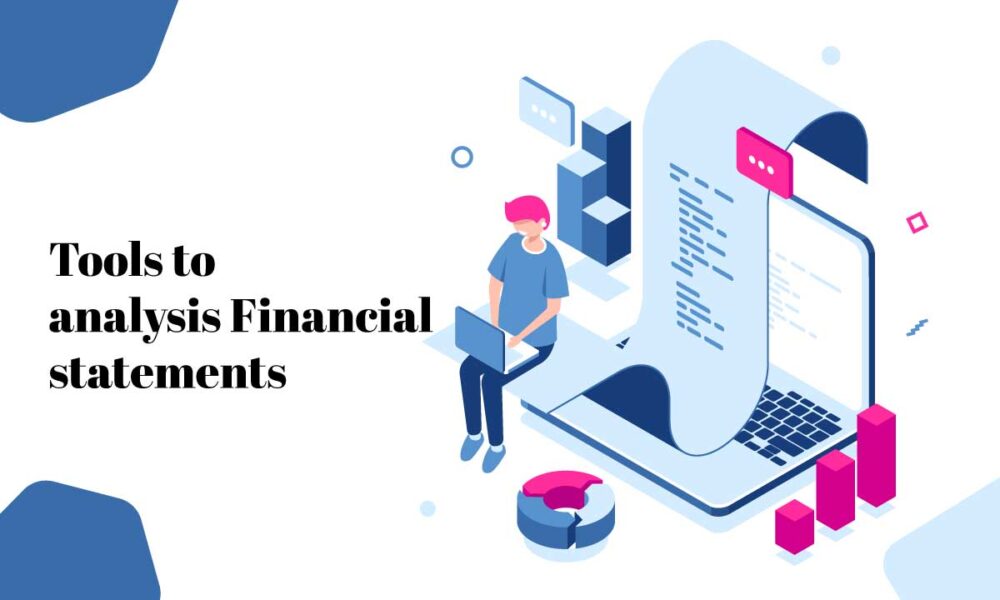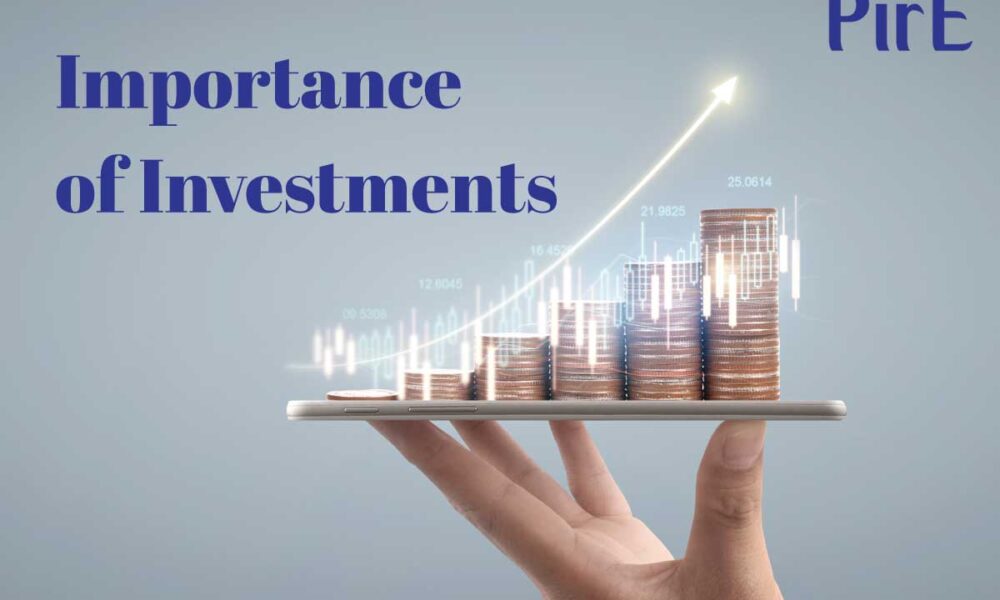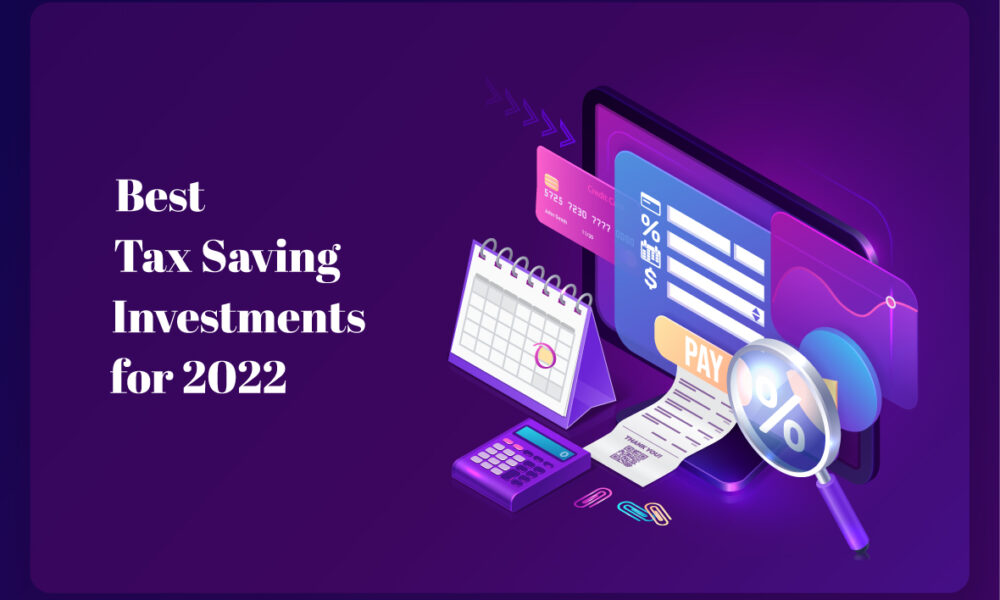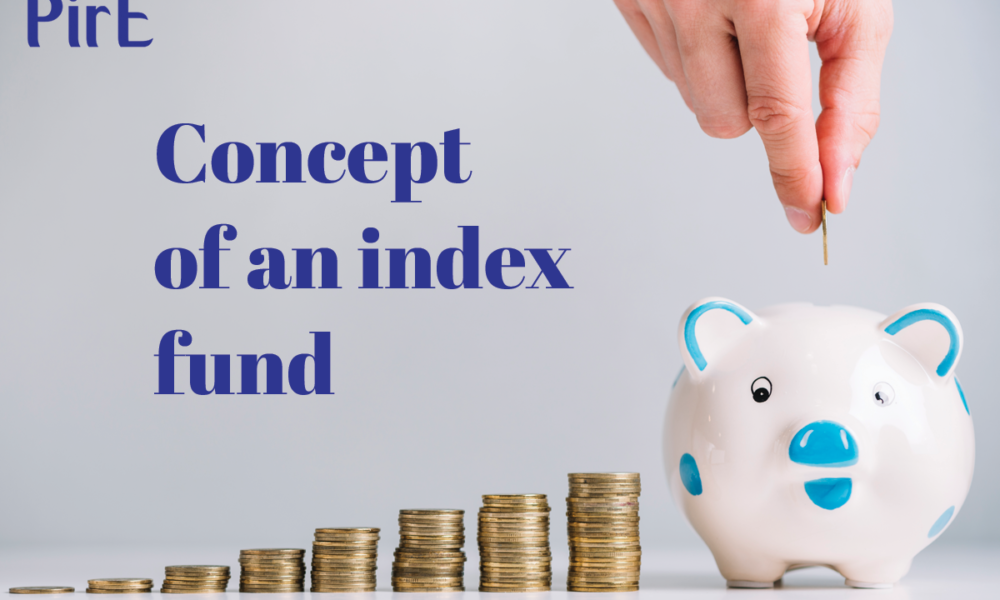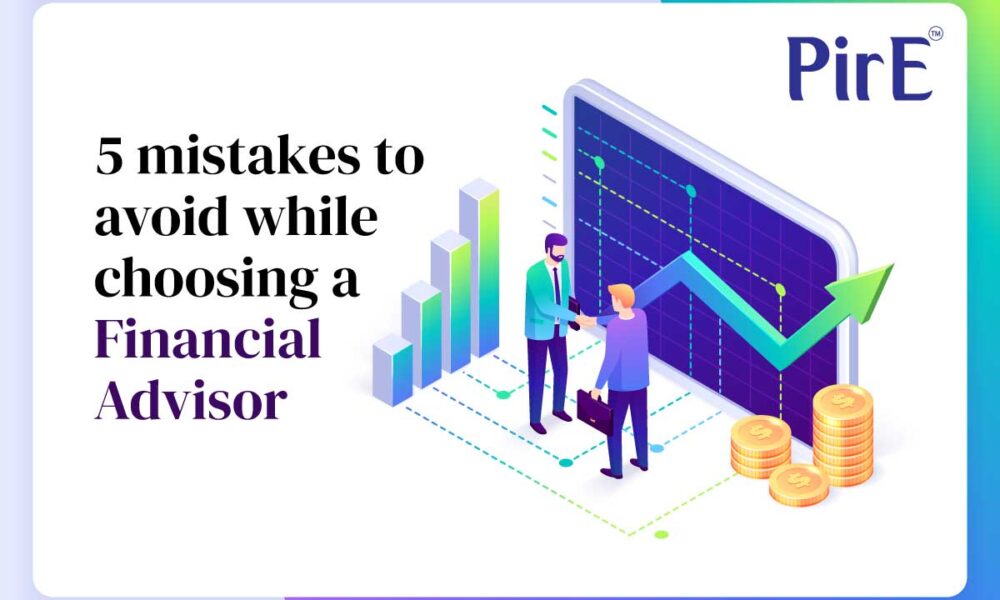Category: Blog
Momentum investing
A trading method known as momentum investing involves buying stocks when they are rising and selling them when they appear to have peaked.
The objective is to manage volatility by looking for purchasing opportunities during brief uptrends and then selling when the momentum of the stocks begins to wane.
The investor then uses the money to search for the subsequent brief rally or purchasing opportunity, and the process is repeated.
Expert traders can respond to short-term, news-driven surges or selloffs. They know when to start a position, how long to hold it for, and when to abandon it.
Initiating a position too soon, exiting a position too late, and being preoccupied and missing important trends and technical deviations are risks associated with momentum trading.
When investing with momentum, decisions are made based on a plan to profit from the current price movement. Changes in the technical indicators of the price movement of the company’s shares are taken into account while making decisions. Taking advantage of short-term stock price volatility is the goal of momentum investing. It’s like a momentum investor is soaring along the crest of an ocean wave before jumping to the next one before the previous one falls down once more.
Key Elements:
To deal with volatility, crowding, and secret traps that lower returns, trading momentum markets require complex risk management procedures. Market participants frequently disregard these guidelines because they are paralysed by the worry that they will miss the rally or selloff while everyone else makes windfall profits.
There are five components to the rules:
- Selection, or the stocks you select
- The timing of when trades are opened and closed is a major source of risk
- Entry timing refers to entering the deal first
- Wide spreads and your holding term are combined by position management
- Consistent charting is required for exit points
When using momentum methods, pick equities that are liquid. Avoid leveraged or inverse ETFs because of the intricate fund architecture that causes their price movements to inaccurately reflect the underlying indices or futures markets. Although they constitute good trading vehicles, regular funds often have lesser percentage gains and losses than individual stocks.
When feasible, look for equities that trade in million shares every day. Even low float issues can become extremely liquid when news flow and strong emotional reactions draw in market participants from many sources. Many popular equities satisfy these conditions.
However momentum trading is not for everyone, when done correctly, it can frequently produce significant results. Trading in this manner requires extreme discipline since transactions must be closed at the first indication of weakness and the funds must be transferred right away into another trade that is displaying strength.
Tools to analysis Financial statements
Financial statement analysis is the process of examining a company’s financial statements in order to make decisions. This analysis is used by external stakeholders to assess an organization’s general health as well as its financial performance and market value. It serves as a monitoring tool for handling finances for internal stakeholders.
Internal and external stakeholders both utilize financial statement analysis to assess the worth and performance of an organization.
All businesses are required by financial accounting to produce balance sheets, income statements, and cash flow statements, which serve as the foundation for financial statement analysis.
Financial statement analysis assesses a company’s balance sheet, income statement, or statement of cash flows to assess its performance.
Investors can create a more complex picture of a company’s financial profile by utilizing a variety of techniques such as-
- Horizontal analysis
- Vertical analysis
- Ratio analysis
- Trend analysis
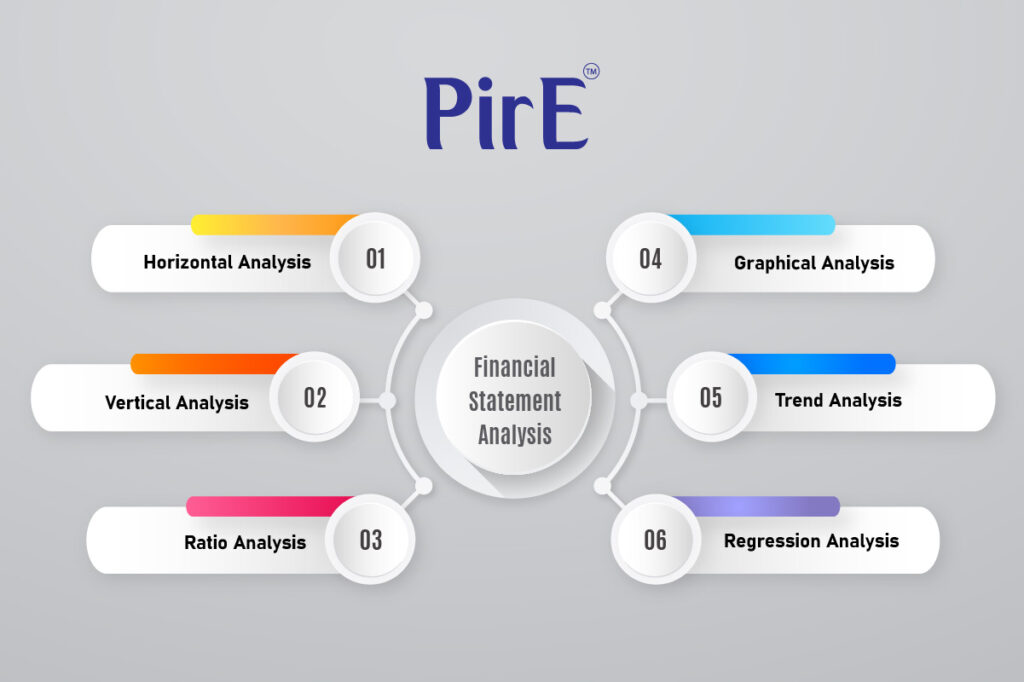
Horizontal analysis
In horizontal analysis a company’s progress through time, performance from two or more periods is compared. To get a broad sense of trends, each item in a ledger is compared to the prior time frame.
There might be some components that are costing the company more if, for instance, the cost of final goods increases by 40% over the course of a year without being represented in the income generated.
Vertical analysis
Vertical analysis refers to establishing a correlation between several ledger line items with the aid of vertical analysis. It enables analysts to comprehend overall performance in terms of receipts and outlays. The outcomes are examined as a ratio.
Ratio evaluation
A general increasing or downward trend can be seen by comparing one financial component to another using ratio methods of financial analysis. Once the ratio has been determined, it can be compared to the prior period to determine whether the company’s performance is in line with predetermined goals. It enables management to identify any departure from expectations and implement remedial actions.
Trend evaluation
Trend analysis can be described as a mathematical method for predicting future outcomes based on historical data. One or more organizations for the same term, or another organization for a different period, may be the subject of a trend analysis. A trend is a collection of data from financial accounts that has been examined to draw useful conclusions.Analyzing trends over three or more time periods is beneficial. It considers the earliest year as the base period and accounts for gradual change trends. A financial statement’s shift will either show a rising or falling trend.
Interesting stock marketing slangs
Here are some interesting stock market slags that are used by stock marketers.
How many of these slags did you actually know?? Let’s explore these.
Bulls
Bulls used to explicitly relate to a market with an upward trend and a growth cycle, but they can now simply refer to an upbeat speculator who frequently makes long trades. Although there is no concrete evidence to support this, some people think that bull markets earned their name from the way bulls throw their enemies and spike their horns high.
Bears
A bear market, often known as a depressed and/or downward-trending market, is the opposite of a bull market. Similarly, a bullish trader or investor has optimistic views about a market, while bearish ones are gloomy.
White swans
Black swans, a phrase that has gained in use after Brexit, refer to an entirely unexpected and unforeseeable position. Black swans are as important as they are unexpected, and they must have a major influence on the market—often a negative one. The dot com bubble explosion in the 1990s and the world financial crisis of 2008 are two well-known examples of black swan events.
Whales
Whales are market movers and shakers with so much capital that their purchases and sales cause commotion in the marketplace in a way that only enormous animals can.
Unicorns
Startups that have grown to be valued at $1 billion or more are known as unicorns, one of the most recent words used here. Some people might cynically speculate that they were given their unusual names since it is impossible to ever find one.
Tigers
As one of the few words derived from an acronym, TIGR, or Treasury Investors Growth Receipt, tigers are unique. In the 1980s, Merrill Lynch bank developed and copyrighted this kind of Treasury bond. Although now mostly out of date, TIGRs were formerly well-liked because owners of “tiger” bonds were exempt from paying interest or taxes.
Fading
a trader who consciously veers away from trends or market sentiment. It is typically not advised for anyone other than the most seasoned market movers since, as traders like to say, “the trend is your friend.”
Inflate and dump
The unethical market manipulators employ the “pump and dump” strategy. By using techniques like bogus news, recommendations, and raving evaluations on a stock that they themselves have planted or created, they profit from a market’s upward trend. This is fraud, not a trading method. Fraudsters are imprisoned.
Importance of Investments
Investments guarantee both current and future financial security. It enables you to increase your wealth while also producing returns that outperform inflation. You also gain from compounding’s advantages.
Additionally, investments may help you achieve your financial objectives, including buying a home, saving for retirement, and creating an emergency fund, among others.
Instilling a practice of setting away a certain sum each month or annually for your investments helps you build financial discipline.
When Covid-19 came in 2020, people realized the value of investments and savings. The covid-19 pandemic rotated the lives of people by 360 degrees. Since then a substantial hike has been observed in investments and saving patterns of people worldwide.
A few reasons why Investments are important-
- Passive source of income
We have learned from the ongoing coronavirus problem that we can’t rely only on your monthly income. We may experience severe challenges if we are unable to generate our normal money for some reason.
You’ll need a second source of income to help you support yourself through times of crisis in order to reduce this risk. You can invest in fixed deposits, stocks, mutual funds, real estate, and other assets, among others. Even after your regular income stops, these investments will continue to provide returns for you, giving you the financial security you need to get by.
- Promotes monetary Independence
Are you concerned about relying on others for your financial requirements after retirement? Be at ease. By consistently making investments to build a retirement corpus, you can enjoy financial freedom in your old age. After retirement, you will be able to easily take care of your monthly costs and other demands thanks to the passive income you would receive from this corpus.
- Aids in fighting inflation
None of us can escape inflation; it is a reality of life. As time goes on, it lessens the purchase power of our money and makes us poorer. You could get into a lot of trouble if you don’t take action to solve this issue.
Investing the cash you have on hand right now is the best method to fend off the damaging effects of inflation. By consistently investing, you can outpace inflation and maintain your purchasing power.
- Tax incentives
Did you know that you might receive tax advantages from your investments as well? Under Section 80C of the Income Tax, a number of investment instruments, including PPF, ELSS, Tax Saving Bonds, and long-term fixed deposits, provide tax advantages.
Union budget 2022-23
The union budget 2022-23 lays emphasis on four areas, the FY 2022–23 seeks to improve the infrastructure.
- GatiShakti, PM
- National Development
- Sunrise prospects, energy transition, climate policy, and productivity improvement
- investing in financing
Giving states more financial liberty
- Increased expenditure for the current year’s “Scheme for Financial Assistance to States for Capital Investment” from Rs. 10,000 crore to Rs. 15,000 crore in the revised estimates
- Allocation of Rs. 1 lakh crore in 2022–23 to help the states spur economic growth: fifty-year interest-free loans on top of regular borrowings
- States will be permitted a budget deficit in 2022–2023 of 4% of the GSDP, of which 0.5% will be related to changes in the electricity sector.
Agriculture and related industries
- Direct payments of Rs. 2.37 lakh crore were made to 1.63 crore farmers to purchase wheat and paddy.
- no chemicals To encourage organic farming throughout the county. Farmers’ holdings in 5 Km broad riverside corridors are the initial emphasis.
- NABARD will facilitate a fund with blended capital to assist agricultural and rural businesses.
- “Kisan Drones” for crop evaluation, digitizing land data, and applying fertilizers and pesticides
Interlinking of the MSMEs & Industry Udyam
- Under the Emergency Financing Linked Guarantee Scheme (ECLGS), 130 lakh MSMEs received additional credit. The ECLGS would continue till March 2023.
- ECLGS’s guarantee cover will increase by Rs. 50000 crores, providing a total of Rs. 5 lakh crore.
- Under the Loans Guarantee Trust for Micro and Small Enterprises (CGTMSE) Raising and Accelerating MSME performance (RAMP) initiative, an extra Rs. 2 lakh crore in credit would be made available for M&S companies, with a planned rollout of Rs. 6000 crore.
Health
- To develop the National Tele Mental Health Program, an open platform for the National Digital Health Ecosystem, which will provide high-quality mental health counseling and treatment services.
- With NIMHANS serving as the nodal center and the International Institute of Information Technical-Bangalore (IIITB) providing technical assistance, a network of 23 tele-mental health centers of excellence would be established.
Best Tax Saving Investments for 2022
Savings are very crucial for everyone to have a secure future. Here are some benefits that help us to save tax and enjoy the benefits of the policy provided by the government of India.
1. Senior citizen saving scheme
SCSS or Senior citizen saving scheme is a saving scheme made especially for people above the age of 60 years delivering fairly significant returns and is a reliable and dependable source of income for their post-retirement era.
Section 80C of the Income Tax Act of 1961 permits standard deduction for principle deposits made into SCSS accounts up to a maximum of Rs. 1.5 lakh. This benefit, however, is only valid under the current tax laws. It is not permitted if a person decides to file tax returns using the new approach outlined in the Union Budget 2020.
However, the interest is subject to taxes according to the payer’s appropriate tax bracket.
2. Life insurance
It is a crucial component of a person’s financial plan since it provides protection to the person’s family in the event of an untimely death. The primary duty is to secure the family’s financial future rests with the earner.
Traditional life insurance and market-linked life insurance (ULIP) both provide tax advantages to policyholders on the money paid.
Life insurance products provide policyholders with tax advantages regardless of their nature.
Section 80C of the Income Tax Act covers life insurance premiums limited to a total of Rs. 1.5 lakhs. Under Section 10, gains on death or maturity are tax-free (D). Exemptions are applied to income and taxed appropriately if the policy is canceled within five years.
- Plans for the long term
- Planned endowments
- ULIPs
- cashback
3. Health insurance
The costs associated with an accident or hospitalization are covered by health insurance, or Mediclaim as it is more often called. In accordance with the promised sum, Mediclaim also covers pre and post-hospitalization costs.
Section 80D of the tax code provides advantages for health insurance. Tax benefits are available on insurance premiums up to Rs 20,000 for older persons and Rs 15,000 for everyone else. The insurer can claim a tax credit of Rs 35,000 (Rs 15,000 + 20,000) if he pays Rs 15,000 for his personal insurance and Rs 20,000 for his elder parent’s coverage. For amounts received under critical illness insurance plans, the maturity value is tax-free.
5. New Pension Scheme
The Pension Funds Regulatory and Development Authority, or PFRDA, oversees the NPS, or New Pension Scheme. It is open to all Indian citizens between the ages of 18 and 60. Due to the minimal fund management fees, it is very cost-effective for the public. Equity (E), Corporate Bonds (C), and G Government Securities are the three independent accounts that which the fund managers manage the money (G). Investors have the option of actively managing their portfolios or passively (auto choice).
Under Section 80CCD of the Income Tax Act, contributions made to the NPS are tax-deductible. Together with Sections 80C and 80CCC, this section’s combined deduction cap cannot exceed Rs 1.5 lakhs.
private investment firm seeking to build and raise empires
PirE ventures is a private investment firm seeking to build and raise empires.
PirE has created more than 3000 jobs and has a market value of 100 Million pounds. PirE has professional and experienced leaders who help the firms grow and achieve success in the long run. PirE helps startups in every field to grow and learn with the latest technological advancements and knowledge. Together at PirE, we seek to grow together with our motto Partner- Build- Grow.
At PirE we ensure our partners have access to a wholesome and thorough deal that will help to improve and flourish their businesses. Our foremost goal is to provide our clients with financial assistance for them to achieve a higher level of success and create a new and viable venture for themselves.
PirE is growing by investing in opportunities, communities, and our people in order to assist investors to achieve outstanding results while also making a good social impact. We encourage innovation and creativity that we can see as opportunities where others don’t.
We are having a wide portfolio-
- Real estate
- Healthcare
- Startups
- Niche manufacturing
- Consumer staples
Real estate
We have several years of experience in the real estate world. What makes us unique and a leading investment entity in the real estate sector is our integrated approach that includes extensive monetary support that will help our clients with a safety net and in the process create a sustainable business model and drive revenue growth. What makes us unique and a leading investment entity in the real estate sector is our integrated approach that includes extensive monetary support that will help clients with a safety net and in the process create a sustainable business model and drive revenue growth.
Healthcare
The health sector has witnessed dynamic growth in recent times and therefore, has managed to pique the interest of both global and local investors. PirE boasts of accurate industry knowledge, which makes it a trusted firm when it comes to such an active sector as healthcare. Our goal is to deploy significant and timely capital to assist our clients in building strong and successful healthcare companies.
Startups
PirE tends to help innovative entrepreneurs expand their businesses by providing them with capital, mentorship, and support. We are a sector-neutral fund that works with entrepreneurs that have a clear path to scalability and sustainability. We seek to develop a genuine engagement with entrepreneurs by using the benefits of a diverse business network. We embrace the grind needed to bring extraordinary products and newer companies to life.
Niche manufacturing
We are focused on investing in and building niche-market leaders at the lower end of the middle market and our mission is to partner with exceptional management teams to build world-class businesses and drive remarkable value for our clients using efficient financial resources.
Consumer Staple
We seek to create value and add insight to a wide spectrum of FMCG firms by employing our financial expertise. We believe in a value-oriented investment strategy that will help the daring build strong businesses. In this sector, the profits may be gradual but are reliable and hence long-term. Our role is to support our clients and help them to see the gains in it.
Top 5 cryptocurrencies to invest in June
Do you know the first transaction that was made by cryptocurrency was for 10,000 bitcoins for 2 pizzas?
The journey of cryptocurrency started in the year 2008. In 2018, the Reserve bank of India stated cryptocurrency was not legal and stated banks to stop using cryptocurrency. But in the year 2020, cryptocurrency became more popular amongst Indians, and the Supreme court of India resumed all the transactions related to cryptocurrency.
Bitcoin
Bitcoin (BTC) is the first cryptocurrency, created by Satoshi Nakamoto in 2009. Bitcoin is built on a blockchain, a distributed ledger that records transactions across multiple computers. Bitcoin is maintained private and safe from fraudsters because updates to the distributed ledgers must be confirmed by solving a cryptographic problem called proof of work.
Bitcoin comes into our mind once we hear cryptocurrency but there are several other cryptocurrencies with good potential.
Ethereum
The Ether token, which is based on the Ethereum blockchain, has become a cornerstone of the cryptocurrency world. Ethereum pioneered blockchain security and utilization, and its smart contracts have since become a substrate for various applications.
Tezos
Tezos is among the most popular cryptocurrencies for social interaction among crypto investors in the very volatile cryptocurrency market. It’s a free and open-source platform that aims to remove roadblocks to blockchain adoption for digital assets and apps. Tezos is a low-energy blockchain that allows artists, entrepreneurs, brands, and others to interact with a DApps network.
Binance Coin
Binance Coin is a cryptocurrency that may be used to trade and pay fees on Binance. Binance Coin has grown beyond simply conducting deals on Binance’s exchange platform since its introduction in 2017. It may now be used for trade, payment processing, and even travel booking. It may also be traded or converted into other cryptocurrencies.
INDEX FUNDS
What is the concept of an index fund?
An index fund is a form of mutual fund that invests in equities that are comparable to those in a certain market index. This means that the scheme will outperform the benchmark index it follows.
What is the purpose of Index Funds?
A market sector is defined by an index, which is a collection of securities. Index funds are classified as passive fund management since they monitor a certain index. The securities traded in a passively managed fund are determined by the underlying benchmark. Furthermore, passively managed funds do not require professional research staff to uncover opportunities and select the best stock.
Unlike an actively managed fund, which tries to time and beat the market, an index fund is meant to track the market.
An index fund, unlike an actively managed fund that tries to pace and beat the market, is meant to mimic the performance of its index. As a result, the returns of index funds are linked to the underlying market index.
Except for a slight variance known as tracking error, the results are nearly identical to the benchmark. The fund management will frequently make every effort to minimise this inaccuracy
Few of the benefits of index funds are:
-
Low costs
Because an index fund replicates its underlying benchmark, it doesn’t require a large team of research experts to assist fund managers in selecting the best stocks. There is also no active stock trading. All of these variables contribute to an index fund’s low management cost.
-
Investing without prejudice
Index funds invest in a way that is automated and regulated. A stated mandate of the amount to be invested in index funds of various assets is given to the fund manager. This removes human judgement and prejudice from investing decisions.
-
A broad market reach
The portfolio is diversified across all sectors and stocks when money is invested in a proportion equivalent to that of an index. As a result, an investor may use a single index fund to capture the likely returns on a bigger part of the market. If you invest in the Nifty index fund, for example, you would gain exposure to 50 firms distributed over 13 industries, ranging from pharmaceuticals to financial services.
-
Tax Advantages of Index Fund Investing
Because index funds are passively managed, they often have low turnover, or only a few trades by a fund management each year. Unitholders receive less capital gains dividends as a result of fewer trades.
Risk involved in Index funds
An index fund will face the same risks as the stocks in the index it is tracking. Other risks to which the fund may be exposed include:
Lack of adaptability– When it comes to reacting to price decreases in the securities in the index, an index fund may have less flexibility than a non-index fund.
Error Tracking– It’s possible that an index fund won’t exactly match its benchmark. For example, a fund may only invest in a subset of the securities in a market index, in which case its performance is less likely to mirror that of the index.
Underperformance– Fees and expenditures, trading charges, and tracking mistakes might lead an index fund to underperform its benchmark.
5 mistakes to avoid while choosing a Financial Advisor
A financial advisor’s responsibilities typically extend beyond simply executing deals on behalf of their customers in the market. Advisors apply their knowledge and experience to create customized financial plans that help clients accomplish their financial objectives.
These tactics cover not just investing, but also savings, budgeting, insurance, and tax planning.
Advisors also meet with their customers on a regular basis to re-evaluate their present condition and future objectives, and to make appropriate plans.
You don’t have to be affluent to profit from a financial advisor’s services.
Here are five common mistakes to avoid when choosing a financial adviser:
- Keeping an eye on the past
You’re hiring more than a money manager when you hire a financial advisor. A skilled financial adviser can offer comprehensive planning and advice.
“This is the process of achieving your goals by effectively managing your resources. It lets you to consider your long-term goals and ideals, as well as how your investments and spending should be directed to achieve these objectives.”
Advisors that are primarily concerned with investment performance are missing the wider picture, which can have negative ramifications for clients.
Long-term success is not guaranteed by an investing plan alone. Similarly, an advisor’s previous performance is no guarantee of future success.
It’s risky to use prior performance as a barometer of a financial advisor’s success or competence.
2. Not inquiring about remuneration
Under the appropriateness criteria, one of the differences between fiduciaries and advisers is how they are rewarded. Advisors can be paid in one of three ways: an annual, hourly, or fixed fee; product commissions; or a mix of fees and commissions.
Fee-only advisers have no financial motive to place you in one product over another because they are not rewarded based on the assets they propose. As a result, a fee-only adviser is likely to take a significantly different approach to investing than one who is paid by investment fees.
3. Not conducting due diligence on an advisor’s qualifications
Some financial consultants are appropriate for company owners or individuals with a high net worth, while others specialise in retirement planning. Some may be ideal for young professionals looking to establish a family. Before you sign on the dotted line, be sure you know what an advisor’s strengths and shortcomings are.
4. Taking the Advice of the First Person You Meet
While it may be tempting to pick the adviser who is nearest to your house or the first advisor listed in the yellow pages, this is a more time-consuming option. Before choosing the ideal adviser for you, take the time to interview at least a few.
5. Neglect to inquire about credentials
Financial advisers must pass a test before they can provide investment advice. Inquire about your advisor’s licenses, examinations, and qualifications. The Series 7, as well as the Series 66 or Series 65, are examinations for financial advisers. Some financial counselors go one step farther and earn the designation of Certified Financial Planner, or CFP.
- ‹ Previous
- 1
- 2
- 3
- 4
- Next ›

